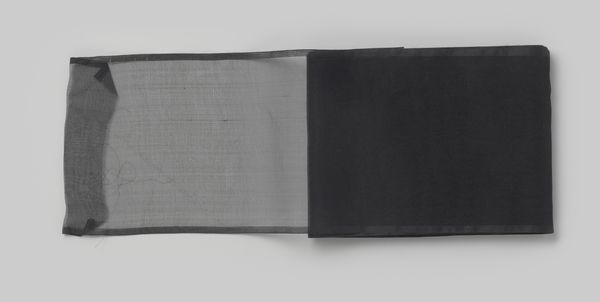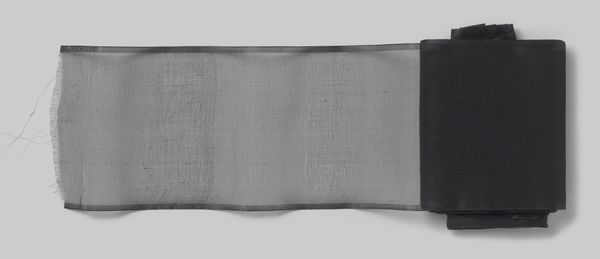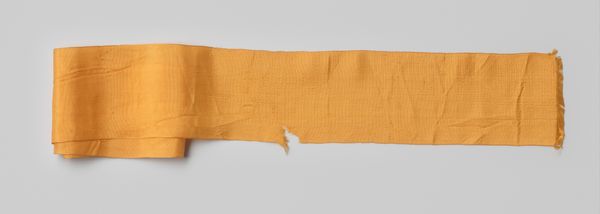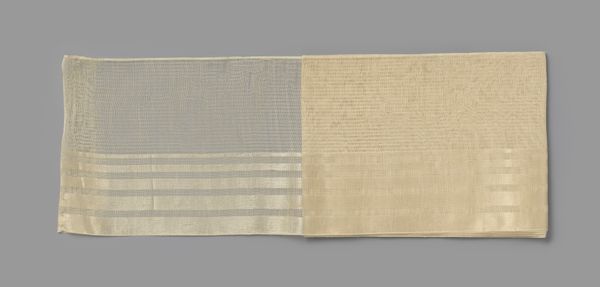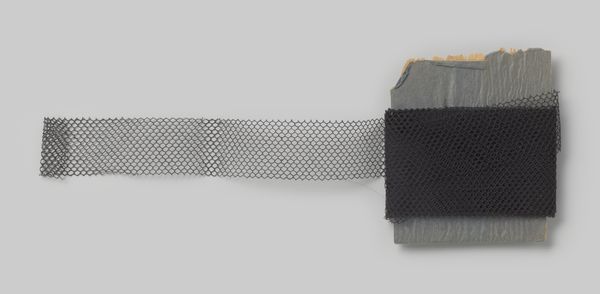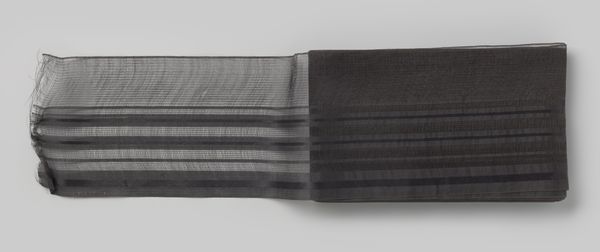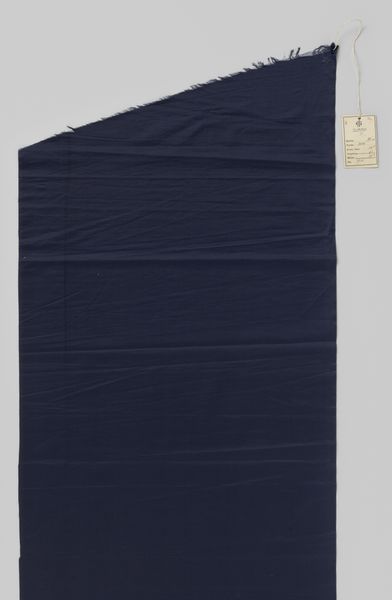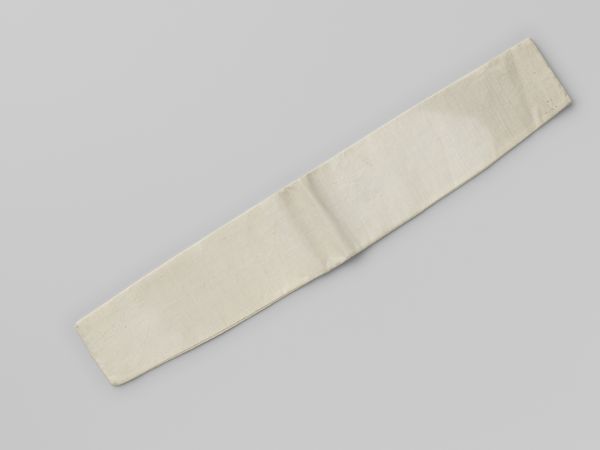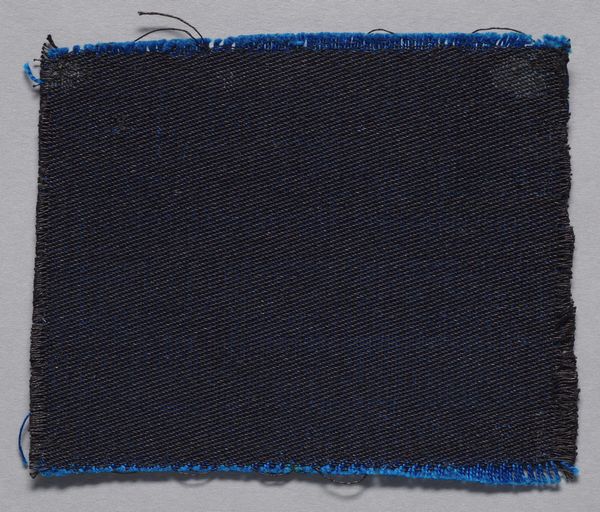
photography
#
still-life
#
photography
Dimensions: width 9.8 cm, length 18 cm, width 13 cm, height 2.5 cm
Copyright: Rijks Museum: Open Domain
Editor: This photograph, "Metrage lint van effen zwart zijden gaas," taken around 1900, showcases a simple roll of black silk ribbon, still partially encased in its cardboard packaging. I find myself drawn to the almost tactile quality of the image. What is your interpretation of this work, considering the artist, Gustav Schnitzler, chose photography, instead of painting for example? Curator: I’m interested in that tactile quality too. It speaks to photography's ability to capture not just the look, but also something of the presence of a material object. Thinking materially, consider what a photograph of silk ribbon offers in comparison to, say, a painting of it. Editor: Well, a photograph offers a very direct connection to the actual materials...silk and cardboard in this case. Curator: Exactly! This isn't about illusionism, it's about the thing itself, mediated by the photographic process. How does this capture speak to the burgeoning consumer culture of the early 20th century? Here, it's about the industrial production, the means by which these materials were made, and their accessibility as commodities. Also note how photography at the time provided ways for advertisers to present items in catalogues or promotional material. Do you feel that plays a role in the production of the picture? Editor: That’s fascinating! It almost feels like a prototype for advertising, focusing on the product itself rather than romanticizing it. I guess, even if unintentionally, it presents the idea of ready-made goods, ripe for consumption. I had not considered how revolutionary this picture is by virtue of the material captured. Curator: It underscores how photography could blur lines. In this case by capturing images for mass production and creating art in an age of mass production. Hopefully it is becoming clear how the social context of this era shaped not just what was being photographed, but how that was represented through materials. Editor: It makes me think about all the unseen labor behind the materials. Curator: Precisely! And photography offers a kind of... witnessing of those material realities.
Comments
No comments
Be the first to comment and join the conversation on the ultimate creative platform.
